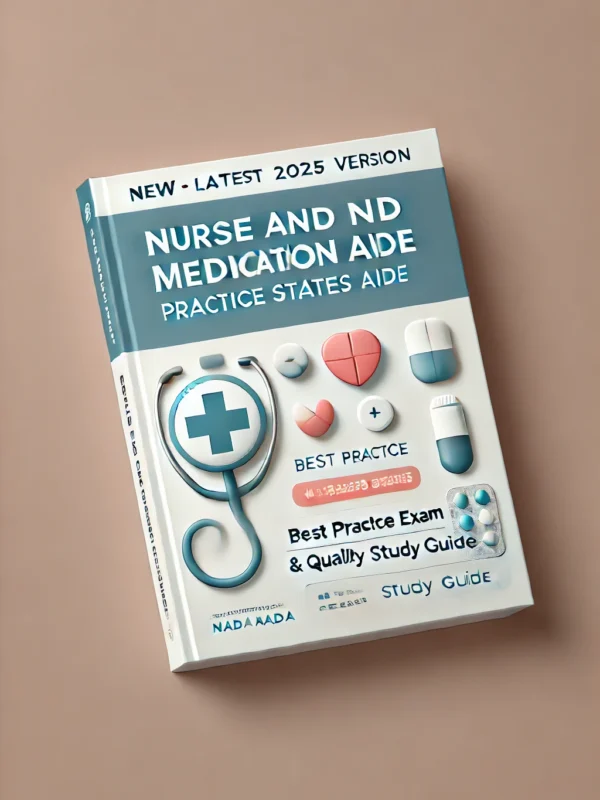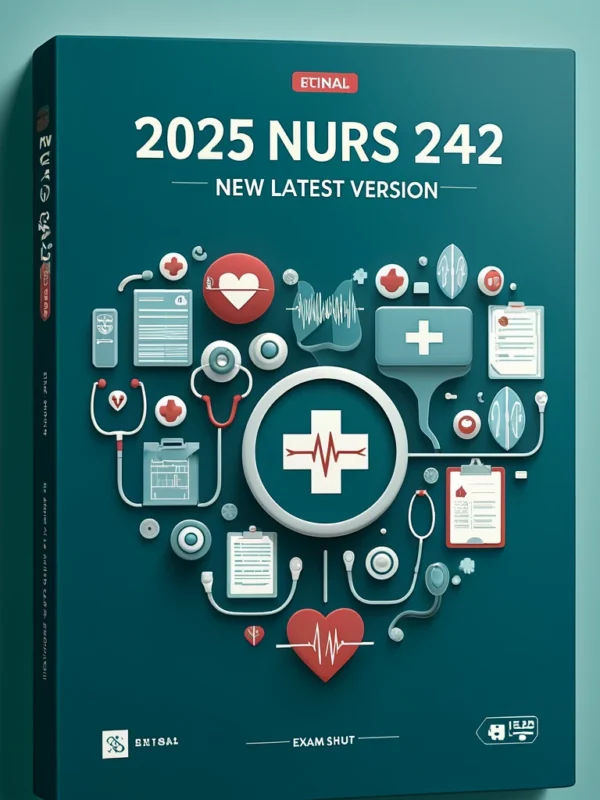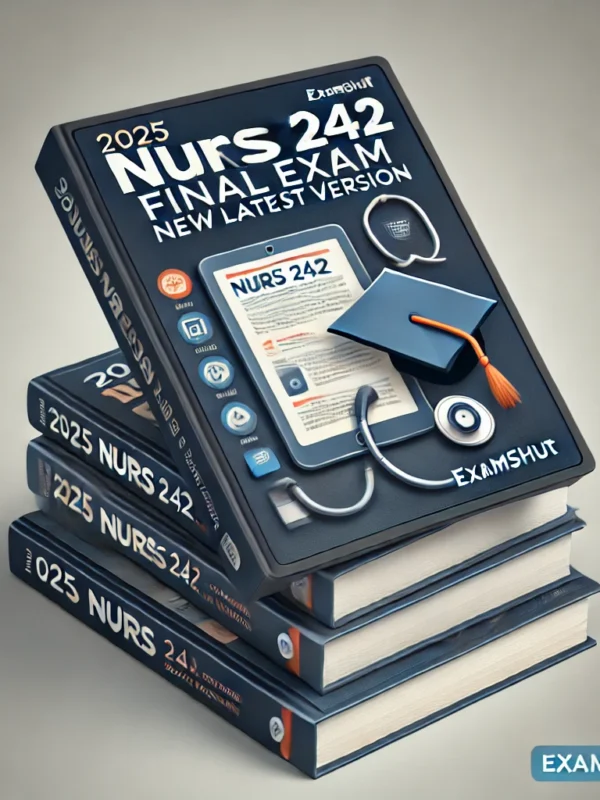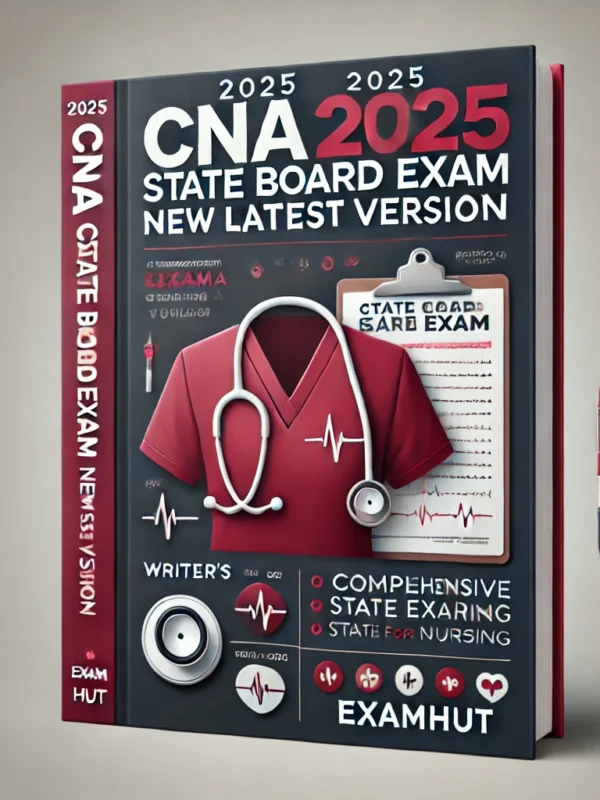The 2025 Psychiatric and Mental Health Nursing Exam 1 Comprehensive Review Practice with 60 Questions with Detailed Rationales is a targeted study resource designed for nursing students and professionals preparing for psychiatric and mental health nursing exams in 2025. This guide features 60 expertly crafted practice questions that align with the content and format of Exam 1, covering essential topics such as therapeutic communication, mental health assessment, psychopharmacology, and management of disorders like schizophrenia, depression, and anxiety. Each question is accompanied by detailed rationales that provide in-depth explanations of key concepts, such as the mechanism of action of SSRIs, de-escalation techniques for aggressive behavior, and the nurse’s role in crisis intervention. The guide also addresses high-yield areas like suicide risk assessment, the use of the Mental Status Exam (MSE), and legal/ethical considerations in psychiatric care, ensuring a thorough understanding of both theoretical and practical aspects. Aligned with the latest psychiatric nursing standards, this resource is ideal for mastering content for nursing school exams, NCLEX preparation, or certifications like the Psychiatric-Mental Health Nursing Certification (PMH-BC). It includes test-taking strategies and tips for tackling complex mental health scenarios, making it an essential tool for achieving a strong performance in psychiatric nursing assessments and delivering compassionate, evidence-based care.
Preview
A patient says to the nurse, “I dreamed I was stoned. When I woke up, I felt emotionally
drained, as though I hadn’t rested well.” Which response should the nurse use to clarify the
patient’s comment?
a. “It sounds as though you were uncomfortable with the content of your dream.”
b. “I understand what you’re saying. Bad dreams leave me feeling tired, too.”
c. “So you feel as though you did not get enough quality sleep last night?”
d. “Can you give me an example of what you mean by ‘stoned’?” – – correct ans- -ANS: D
The technique of clarification is therapeutic and helps the nurse examine the meaning of
the patient’s statement. Asking for a definition of “stoned” directly asks for clarification.
Restating that the patient is uncomfortable with the dream’s content is parroting, a non
therapeutic technique. The other responses fail to clarify the meaning of the patient’s
comment.
A patient diagnosed with schizophrenia tells the nurse, “The CIA is monitoring us through
the fluorescent lights in this room. Be careful what you say.” Which response by the nurse
would be most therapeutic?
a. “Let’s talk about something other than the CIA.”
b. “It sounds like you’re concerned about your privacy.”
c. “The CIA is prohibited from operating in health care facilities.”
d. “You have lost touch with reality, which is a symptom of your illness.” – – correct ans-
ANS: B
It is important not to challenge the patient’s beliefs, even if they are unrealistic. Challenging
undermines the patient’s trust in the nurse. The nurse should try to understand the
underlying feelings or thoughts the patient’s message conveys. The correct response uses
the therapeutic technique of reflection. The other comments are non-therapeutic. Asking
to talk about something other than the concern at hand is changing the subject. Saying that
the CIA is prohibited from operating in health care facilities gives false reassurance. Stating
that the patient has lost touch with reality is truthful, but uncompassionate.
The patient says, “My marriage is just great. My spouse and I always agree.” The nurse
observes the patient’s foot moving continuously as the patient twirls a shirt button. The
conclusion the nurse can draw is that the patient’s communication is:
a. clear.
b. mixed.
c. precise.
d. inadequate. – – correct ans- -ANS: B
Mixed messages involve the transmission of conflicting or incongruent messages by the
speaker. The patient’s verbal message that all was well in the relationship was modified by
the nonverbal behaviors denoting anxiety. Data are not present to support the choice of the
verbal message being clear, explicit, or inadequate.
drained, as though I hadn’t rested well.” Which response should the nurse use to clarify the
patient’s comment?
a. “It sounds as though you were uncomfortable with the content of your dream.”
b. “I understand what you’re saying. Bad dreams leave me feeling tired, too.”
c. “So you feel as though you did not get enough quality sleep last night?”
d. “Can you give me an example of what you mean by ‘stoned’?” – – correct ans- -ANS: D
The technique of clarification is therapeutic and helps the nurse examine the meaning of
the patient’s statement. Asking for a definition of “stoned” directly asks for clarification.
Restating that the patient is uncomfortable with the dream’s content is parroting, a non
therapeutic technique. The other responses fail to clarify the meaning of the patient’s
comment.
A patient diagnosed with schizophrenia tells the nurse, “The CIA is monitoring us through
the fluorescent lights in this room. Be careful what you say.” Which response by the nurse
would be most therapeutic?
a. “Let’s talk about something other than the CIA.”
b. “It sounds like you’re concerned about your privacy.”
c. “The CIA is prohibited from operating in health care facilities.”
d. “You have lost touch with reality, which is a symptom of your illness.” – – correct ans-
ANS: B
It is important not to challenge the patient’s beliefs, even if they are unrealistic. Challenging
undermines the patient’s trust in the nurse. The nurse should try to understand the
underlying feelings or thoughts the patient’s message conveys. The correct response uses
the therapeutic technique of reflection. The other comments are non-therapeutic. Asking
to talk about something other than the concern at hand is changing the subject. Saying that
the CIA is prohibited from operating in health care facilities gives false reassurance. Stating
that the patient has lost touch with reality is truthful, but uncompassionate.
The patient says, “My marriage is just great. My spouse and I always agree.” The nurse
observes the patient’s foot moving continuously as the patient twirls a shirt button. The
conclusion the nurse can draw is that the patient’s communication is:
a. clear.
b. mixed.
c. precise.
d. inadequate. – – correct ans- -ANS: B
Mixed messages involve the transmission of conflicting or incongruent messages by the
speaker. The patient’s verbal message that all was well in the relationship was modified by
the nonverbal behaviors denoting anxiety. Data are not present to support the choice of the
verbal message being clear, explicit, or inadequate.











Reviews
There are no reviews yet.